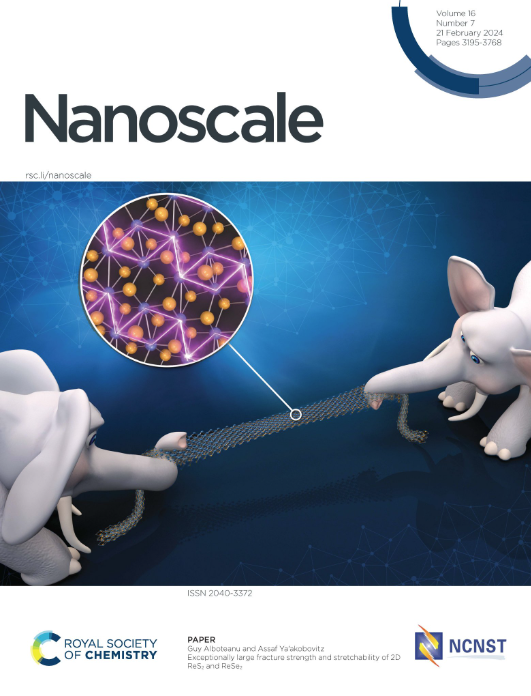Charge transfer between van der Waals coupled metallic 2D layers
IF 5.1
3区 材料科学
Q1 CHEMISTRY, MULTIDISCIPLINARY
引用次数: 0
Abstract
Van der Waals heterostructures have become a rapidly growing field in condensed matter research, offering a platform to engineer novel quantum systems by stacking different two-dimensional (2D) materials. A diverse range of material combinations, including hexagonal boron nitride, transition metal dichalcogenides and graphene, with electronic properties spanning from insulating to semiconducting, metallic, and semimetallic, have been explored to tune the properties of these heterostacks. However, understanding the interactions and charge transfer between the stacked layers remains challenging, particularly when more than two layers are involved. In this study, we investigate the charge transfer in a potassium-adlayer/graphene/lead-monolayer heterostructure stacked on a SiC substrate. Using synchrotron-based angle-resolved photoemission spectroscopy, we analyze the band structure of each layer, focusing on the charge transfer from K to the underlying 2D layers. Since K forms a (2×2) overlayer with respect to graphene, the amount of charge carriers donated by K can be determined. Our findings reveal that adsorption of K not only leads to a significant n-doping of the adjacent graphene layer but also to an electron transfer into the Pb monolayer. Remarkably, ≈ 44% of the electrons donated by the K adlayer are transferred into its second nearest neighbouring layer, i.e. Pb, while ≈ 56% remain in the graphene.范德华耦合二维金属层间的电荷转移
范德华异质结构已经成为凝聚态物质研究中一个快速发展的领域,为通过堆叠不同的二维(2D)材料来设计新型量子系统提供了一个平台。各种各样的材料组合,包括六方氮化硼、过渡金属二硫族化物和石墨烯,具有从绝缘到半导体、金属和半金属的电子特性,已经被探索以调整这些异质堆的特性。然而,理解堆叠层之间的相互作用和电荷转移仍然具有挑战性,特别是当涉及两层以上时。在这项研究中,我们研究了堆叠在SiC衬底上的钾层/石墨烯/铅单层异质结构中的电荷转移。利用基于同步加速器的角度分辨光谱学,我们分析了每一层的能带结构,重点研究了从K到底层二维层的电荷转移。由于K与石墨烯形成(2×2)覆盖层,因此可以确定K提供的载流子的数量。我们的研究结果表明,K的吸附不仅导致相邻石墨烯层显著的n掺杂,而且导致电子转移到Pb单层。值得注意的是,K层提供的约44%的电子被转移到其第二近邻层,即Pb层,而约56%的电子留在石墨烯中。
本文章由计算机程序翻译,如有差异,请以英文原文为准。
求助全文
约1分钟内获得全文
求助全文
来源期刊

Nanoscale
CHEMISTRY, MULTIDISCIPLINARY-NANOSCIENCE & NANOTECHNOLOGY
CiteScore
12.10
自引率
3.00%
发文量
1628
审稿时长
1.6 months
期刊介绍:
Nanoscale is a high-impact international journal, publishing high-quality research across nanoscience and nanotechnology. Nanoscale publishes a full mix of research articles on experimental and theoretical work, including reviews, communications, and full papers.Highly interdisciplinary, this journal appeals to scientists, researchers and professionals interested in nanoscience and nanotechnology, quantum materials and quantum technology, including the areas of physics, chemistry, biology, medicine, materials, energy/environment, information technology, detection science, healthcare and drug discovery, and electronics.
 求助内容:
求助内容: 应助结果提醒方式:
应助结果提醒方式:


